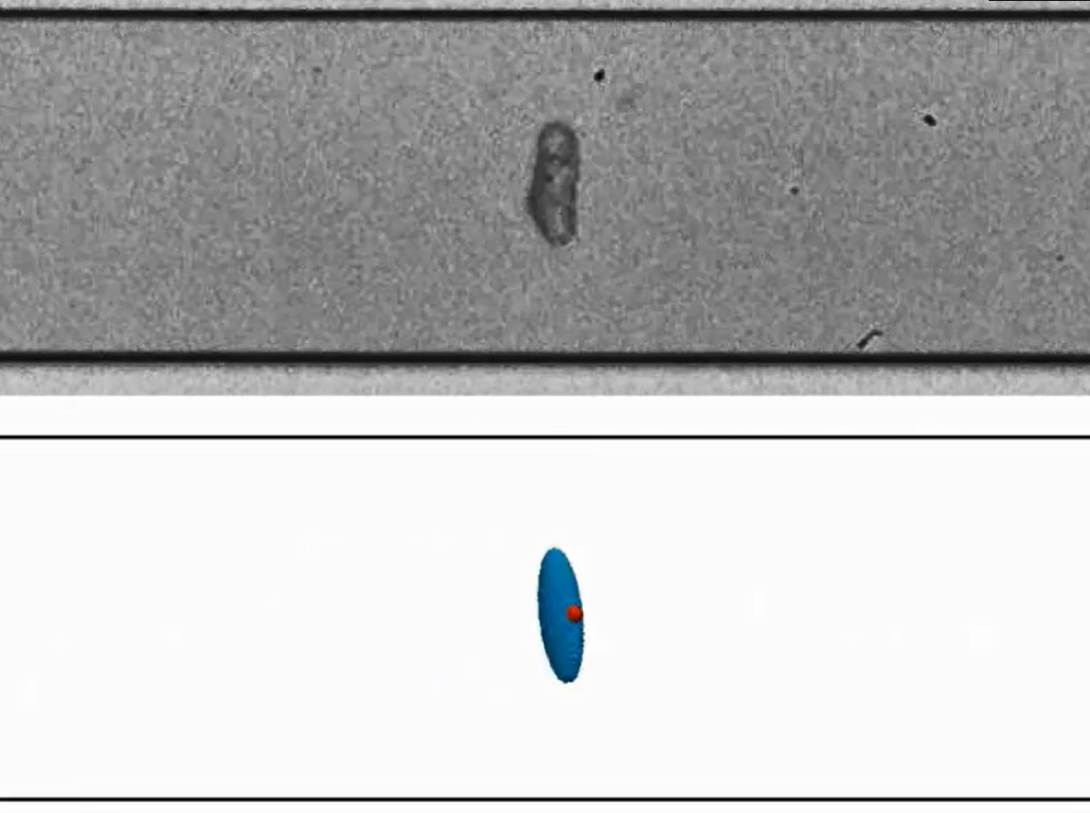Study unlocks new information on ellipsoidal particles
Text block Heading link

Inertial microfluidics — a passive technique for particle separation that allows researchers to sort and separate particles — can be used to study circulating tumor cells, exosomes, DNA, and other biological particles.
Most of the existing research in this field has been done with spherical particles, but cells in the human body are rarely spherical.
To better understand how different shaped particles flow within inertial microfluidics, a UIC Engineering research team – composed of biomedical engineering Master student Giuseppe Lauricella from Politecnico di Milano under the supervision of Assistant Professor Zhangli Peng at UIC, Research Assistant Professor Jian Zhou and Ph.D. student Qiyue Luan from the lab of Richard and Loan Hill Professor Ian Papautsky – conducted a systematic investigation of non-spherical particles.
This research team performed a systematic study on prolate ellipsoidal particles –spheroids with an elongated shape – where they tested different aspect ratios, different sizes, and different starting positions in their models
“Cells’ shape can be used as a distinguishing factor to separate them,” Lauricella said. “The idea is to explore and unveil the effects that the shape has on the inertial migration process.”
In the study, the research team revealed a unique rotational behavior of prolate particles. Under specific conditions, while flowing downstream, the particle can undergo a so-called “logrolling” motion, instead of the commonly reported “tumbling” motion.
Lauricella said this investigation is a great example of how numerical modeling can provide a better understanding of the underlying physics of a phenomenon and access information that could not be obtained through experiments alone.
Peng noted the results of this paper can be helpful to all kinds of applications where particle shape and alignment are relevant for their separation, sorting, and analysis, which could lead to better diagnostic and analysis in biomedical, medical, material, and biotechnological fields.
The researchers published their results in the journal Physics of Fluids in a paper titled “Computational study of inertial migration of prolate particles in a straight rectangular channel,” which has been chosen as a featured article by the journal editor.
The work was the result of collaborative efforts of researchers from the Center for Advanced Design Manufacturing of Integrated Microfluidics (CADMIM) using the supercomputer Theta from the Argonne National Laboratory under the Director’s Discretionary Allocation, along with funding support from the National Science Foundation and the CADMIM.